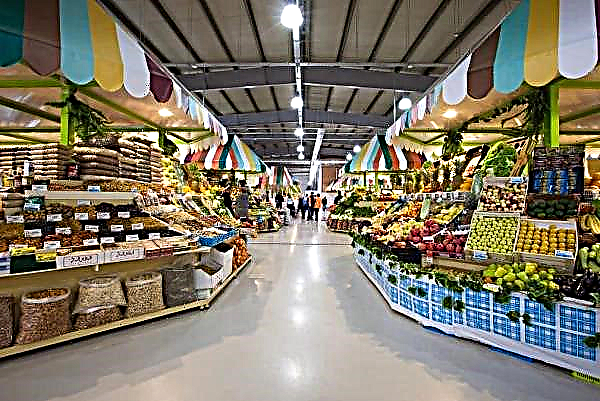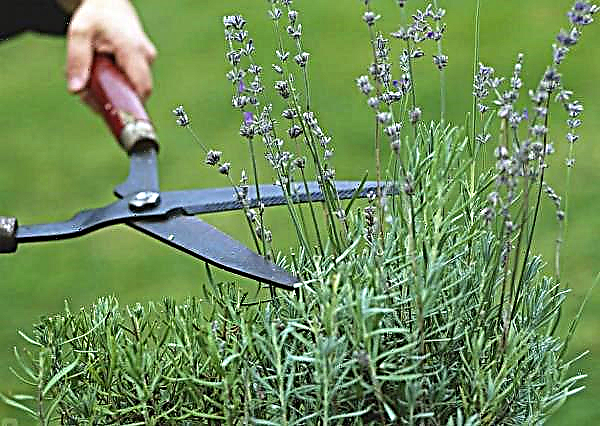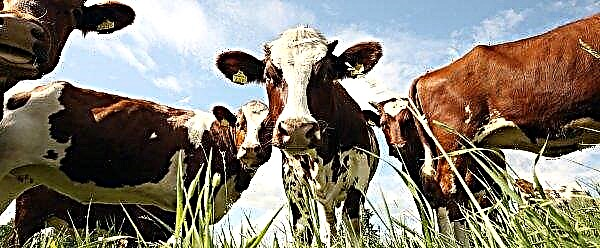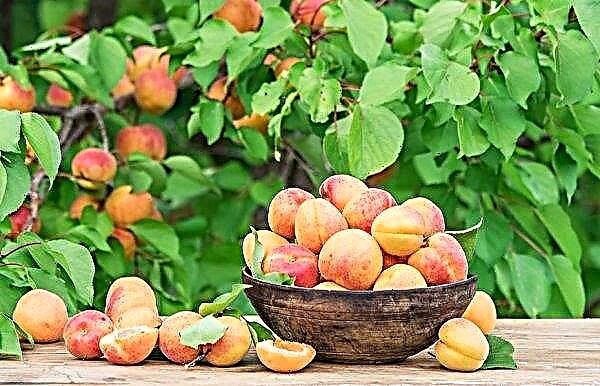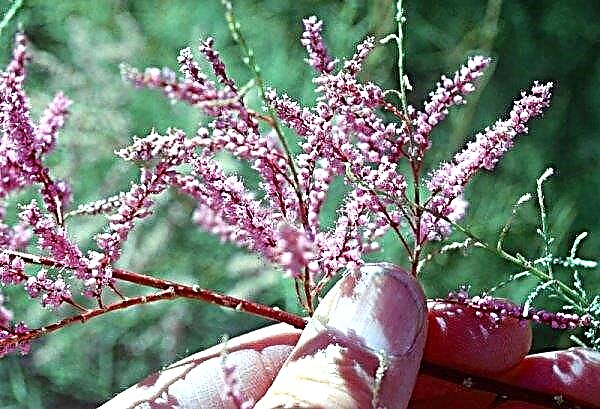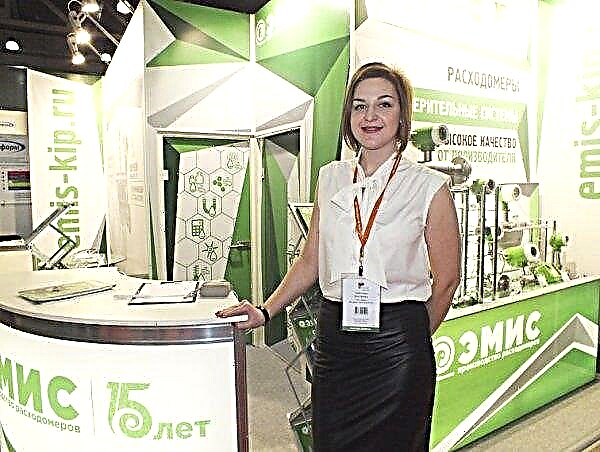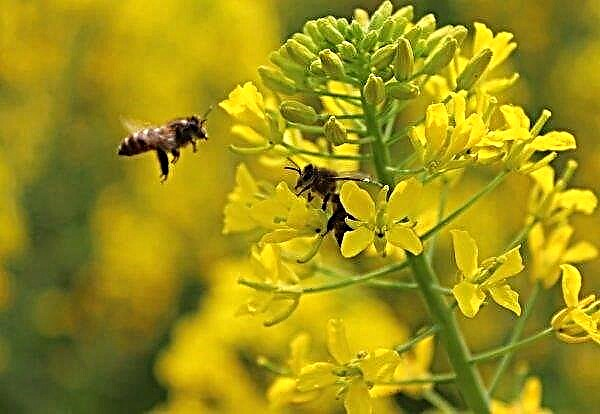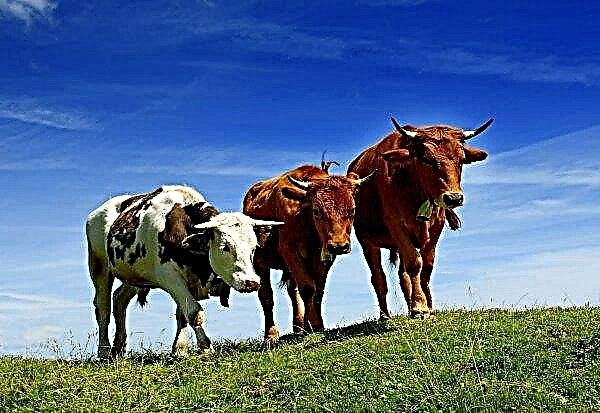The small size of the land or the lack of acceptable soil encourages gardeners to use non-standard methods of growing vegetables. We learn about the technology of growing potato culture in bags, what is needed for this, the essence of the method and a step-by-step guide.
Features and essence of the method
This method of growing potatoes is often used abroad in limited areas. It lies in the fact that the planting material of potatoes is planted in bags with a nutrient substrate, in which the crop is formed.
Did you know? Belarusians got the largest potato crop from one seat. In Bobruisk-25, 26 potatoes with a total weight of 3 kg 150 g were dug from one bush of this Sineglazka cultivar.
- This method has become popular due to the undoubted advantages:
- space saving - bags can be placed on the pavement, near the fence or walls;
- independence of the quality of land on the site - you can use the purchased mixture;
- when using disinfected materials, potato cultures are not threatened by pests and diseases;
- less labor costs - no need to dig, spud, fight weeds, pests and diseases, the crop is harvested quickly.

- The disadvantages of the method include the following:
- increased cost - you need to buy soil, bags, fertilizers;
- carrying out constant irrigation and top dressing - in such conditions, the soil dries quickly and depletes;
- high humidity and outdoor conditions destroy bags, and they cannot be used all the time;
- yields will not be as high as on normal beds.
Necessary materials for growing
For this technology of growing potatoes, it is necessary to prepare three main components:
- Tara. To do this, use strong and spacious bags, at the bottom of which some gardeners sew a valve for harvesting with their own hands. There are special bags for this technology. You can use polypropylene products - they allow air and moisture to pass, strong and resistant to high humidity. Sacks of sugar, flour or cereals of 50 kg, as well as bags of “shuttles”, are well suited. Some gardeners manage to use garbage bags for these purposes. You should not take too large and dense products for planting.
- Substrate. It must be nutritious, good in water and air, and be disinfected.
- Tubers for planting. It is worth dwelling on early varieties with high yields, forming a large number of tubers. You can use planting material with medium maturity.
Optimal conditions for growing
For the cultivation of potatoes, you need to choose a well-lit place with convenient approaches to it for caring for plants and harvesting. Bags must be installed firmly, not to heel and not to sag.  To ensure stability, they are dug into the ground or strengthened with supports (bars, bricks). It should also be borne in mind that excess water after irrigation will flow from such containers and fill the place around.
To ensure stability, they are dug into the ground or strengthened with supports (bars, bricks). It should also be borne in mind that excess water after irrigation will flow from such containers and fill the place around.
Important! You should not put bags of culture under the drains - during the rainy season they can be poured, which will lead to rotting of root crops.
Preparing for growing potatoes
After acquiring everything you need to grow potatoes in bags, and choosing a place, you should properly prepare and plant everything.
Preparing containers for landing
If there are no drainage holes in the planting product, then they must be made - there should be no stagnation of water. At the bottom, a small layer of drainage (15 cm) of crushed stone or broken brick is covered.
You can replace the landing bags with a barrel or box and decorate them. Interesting look products made of fine mesh, rolled into a cylinder and lined with straw.
Did you know? Potato appeared in Russia for the first time under Peter I at the end of XVII. He sent a bag of tubers from Holland, but the culture became widespread only at the end of the 19th century after the potato reforms of Nicholas I.
Planting material
Before planting, you should carefully sort the tubers. They should be without the slightest sign of damage. Their weight can range from 30 to 100 g, but it is best to dwell on specimens of medium size.

A month before planting, nodules are removed from the store and placed in a warm place (+15 ... + 20 ° C), illuminated by the sun, for germination. After 20 days, strong sprouts appear on them. Non-germinated nodules or specimens with a small number or weak shoots are rejected.
For better sprouting of the eyes, it is recommended to lower the room temperature several times a day or two to + 8 ° C. Such temperature jumps harden the plant and will contribute to the early emergence of seedlings after planting.
For growing early potatoes, large tubers are not recommended to be cut in half. It will be good for him, after the appearance of strong shoots, to continue germination for 10 days in a special substrate of humus, peat, compost and sawdust. The substrate can be replaced with just a dampened cloth. This speeds up the appearance of the crop by almost a week.
Before planting the tubers in bags, it is necessary to pickle with copper sulfate (5 g / 3 l of water) or manganese (5 g / 5 l). And you can make a mixture - 5 g each of copper sulfate, potassium permanganate and boric acid are dissolved in a 10-liter bucket.
The ash solution (500 g of ash per 5 l) or sprinkling of planting material before ash planting has proven itself well. Planting material is aged in such solutions for 2-3 minutes and dried. A good prevention of diseases will also be the treatment of tubers with the drug Fitosporin.
Soil requirements
For growing in bags, a light nutritious soil with a slightly acidic reaction (5.5–6.5 pH) is required. You can simply mix garden soil with humus.
If desired, it will be good to make the following soil mixture - mix a bucket of land from the beds, a humus bucket, 2 liters of sand and 1-2 liters of ash, add nitrogen-containing fertilizer or rotted manure. Home-made mixtures must be sanitized in advance (steamed).Important! You can’t take the land for potatoes from the place where other solanaceous crops or the potato itself grew.
Landing time
Landing on the street can begin in late April or early May. The optimum temperature for growing is + 15 ... + 18 ° С, but planting can be done when temperatures are set above + 12 ° С.
Potatoes can be planted in a bag two months before and kept indoors until acceptable temperatures are established. During this period, tubers can form roots, but then the plant will need sunlight.
Landing technology
Planting potatoes in bags is step by step done as follows:
- The bag should be tucked on top by about 1/2 for ease of planting.
- Pour drainage to the bottom, and then mix soil with a layer of 0.3 m.
- Lay out 2-3 root crops with eyes in the direction of the top and fill with soil with a layer of 0.2 m.
- Water sparingly.

Did you know? Potatoes were brought in Europe from Peru in the 16th century. For a long time it was grown as an exotic plant and was considered inedible.
After 7-14 days, seedlings appear. They are covered with soil until the height of the bag reaches 0.5-0.6 m. The remaining edge of the bag will need to be wrapped out. Then the bags are moved to a well-lit and convenient place for care (near the house or barn, at the fence, along the paths).
Video: planting potatoes in bags
Further care
Good potato care will increase productivity by 2-3 times. To do this, you need to carry out the correct watering and make the appropriate fertilizing.
Feeding and watering
First you need to water with a limited amount of water and infrequently, since excess moisture can cause rot and spoil the crop. As soon as the first sprouts have appeared, watering can be started with an interval of 7–10 days, and make sure that excess moisture leaves the bags through the drainage holes. You need at least 2.5-3 liters per bush. 2-3 weeks before the collection of root crops, watering the soil is stopped.
To increase productivity, fertilizing is necessary. During the emergence of seedlings, you can use potash fertilizers. Top dressing is applied at the root. During their application, you need to make sure that the fertilizer solution does not fall on the stem and leaves, as this can damage the plant. An excellent fertilizer will be rotted manure.
Pest and Disease Prevention
When grown in bags, potatoes are not as susceptible to various pests and diseases as when grown in open ground.
But still, you should adhere to certain rules of prevention:
- It is necessary to observe crop rotation and not to take the soil for planting from areas where pepper, tomatoes, tobacco or also potatoes were previously grown. This will prevent the occurrence of late blight and other diseases, the causative agents of which through the soil can infect root crops.
- You can not also use soil and manure from those sites and places where there is a bear.
- Exclude excess watering. It can lead to a number of fungal diseases that cause rotting of root crops. This will reduce the yield and quality of potatoes.
- Bushes should be inspected regularly for diseases and pests. At the first appearance of any signs, apply appropriate measures.
- Potatoes in bags are susceptible to ants. They may well want to equip an anthill in such structures. To prevent the appearance of such insects, it is recommended to sprinkle poison like Anteater around the bags. You can also use folk remedies - sprinkle the soil for planting with mustard and pepper powder.
Dates and basic rules for harvesting
Harvesting is largely determined by the variety of potatoes selected for planting. The ripening period ranges from 2-3.5 months. Typically, harvest time is from late July to the first half of September.

Young potatoes can be harvested after 60 days. When tubers are sprouted and planted in bags indoors with subsequent removal to the street, the crop can be obtained in June. Digging out root crops is not necessary. To harvest it is enough to cut the bag from the side and get the tubers.
Important! After collecting potatoes, the remaining soil for re-planting is not used, as the soil is depleted.
If special pockets are provided in the bags, they are opened and the fruits are taken out. If you follow all the nuances of the technology, you can get an early harvest of potatoes even in very tight areas.

